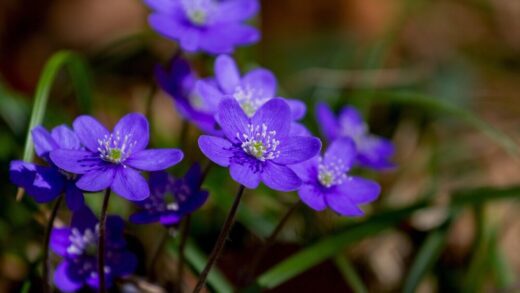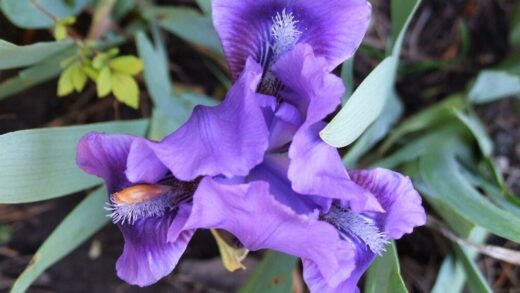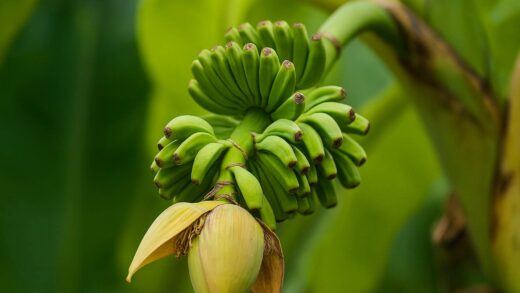Understanding the water requirements of Geranium x cantabrigiense is key to cultivating this hardy perennial successfully, though its needs are refreshingly modest once established. This plant is renowned for its drought tolerance, a trait that makes it an excellent choice for water-wise gardening and low-maintenance landscapes. For newly planted specimens, however, regular and consistent watering is crucial. During its first growing season, the plant is focused on developing a deep and extensive root system, which will be its anchor and primary source of moisture for years to come. Providing adequate water during this establishment phase is the most critical irrigation task you will undertake for this plant. The goal is to keep the soil consistently moist but never saturated. A deep watering once or twice a week is generally more effective than frequent, shallow sprinklings. Deep watering encourages the roots to grow further down into the soil in search of moisture, which ultimately leads to a more resilient and self-sufficient plant. The frequency of watering will naturally depend on your specific climate, soil type, and recent rainfall. A simple way to check if it is time to water is to feel the soil a few centimetres below the surface; if it feels dry to the touch, it is a good time to provide a thorough soaking.
Once a Cambridge cranesbill has made it through its first full year in the garden, its water needs decrease significantly. Its well-developed rhizomatous root system becomes highly efficient at seeking out and absorbing moisture from the soil. In many temperate climates, the natural rainfall is often sufficient to keep the plant happy and healthy throughout the year. Supplemental irrigation is typically only necessary during extended periods of hot, dry weather or prolonged drought. The plant is quite communicative, and its appearance will often tell you if it is thirsty. If you notice the leaves beginning to look slightly wilted or dull, it is a clear sign that a deep drink of water would be appreciated.
The type of soil in your garden plays a significant role in how often you will need to water. Sandy soils drain very quickly and do not retain moisture well, so plants grown in this type of medium may require more frequent watering, even when established. Conversely, heavy clay soils hold onto water for much longer, and the primary danger here is overwatering, which can lead to root rot. Improving your soil’s structure with organic matter before planting is the best way to create a balanced medium that retains adequate moisture while still allowing for good drainage, making your irrigation efforts much more effective and reducing the risk of water-related problems.
Ultimately, the irrigation strategy for Geranium x cantabrigiense is one of careful observation rather than a rigid schedule. Pay attention to your plants and your local weather conditions. Remember that it is far more tolerant of dry conditions than it is of waterlogged soil. By providing sufficient water during its initial establishment period and then allowing it to rely on its natural drought tolerance, you will be fostering a healthy, resilient plant that requires minimal intervention. This approach not only saves water but also promotes a stronger, more robust root system, ensuring the long-term success of this wonderful ground cover.
Watering during establishment
The first few months after planting are the most critical period for watering Geranium x cantabrigiense. During this establishment phase, the plant’s primary focus is on growing a robust root system that can sustain it in the future. Without a well-developed root network, the plant is vulnerable to drying out, especially during warm or windy weather. Therefore, your role as a gardener is to provide consistent moisture to support this crucial development. The aim is to prevent the root ball from ever completely drying out while the plant is getting settled into its new home.
More articles on this topic
Immediately after planting, give the geranium a deep and thorough watering. This initial soaking serves two important purposes: it provides immediate hydration to the roots, and it helps to settle the soil around the root ball, eliminating any air pockets that could prevent root-to-soil contact. For the first few weeks, you should check the soil moisture every couple of days. A good technique is to insert your finger into the soil near the base of the plant; if the top 3-5 centimetres feel dry, it is time to water again.
The frequency of watering during this period will vary depending on several factors, including your climate, the time of year, and your soil type. In cool, spring weather, you may only need to water once a week. However, if you plant in late spring and an early heatwave arrives, you might need to water every two to three days. It is essential to be observant and adjust your watering routine based on the prevailing conditions rather than sticking to a fixed schedule. The key is consistency and ensuring the roots have the moisture they need to grow and expand into the surrounding soil.
As the plant begins to show signs of new growth, such as fresh leaves and stems, it is an indication that the root system is starting to establish itself. At this point, you can gradually begin to reduce the frequency of watering. This encourages the roots to grow deeper in search of water, which is precisely what you want for long-term drought tolerance. By the end of the first growing season, your Geranium x cantabrigiense should be well on its way to becoming the self-sufficient and resilient plant it is known to be, requiring much less attention from you in the subsequent years.
Irrigation for mature plants
Once Geranium x cantabrigiense is fully established, typically after its first full year in the garden, it becomes remarkably drought-tolerant. Its fleshy rhizomes and extensive root system are adept at storing water and seeking it out from deep within the soil profile. For mature plants, the philosophy of “less is more” is often the best approach to irrigation. In many regions, natural rainfall will provide all the moisture the plant needs to thrive, and supplemental watering will be the exception rather than the rule. This makes it an ideal plant for sustainable and low-maintenance gardening practices.
More articles on this topic
The need for supplemental watering for established plants is almost entirely dictated by the weather. During a typical summer with occasional rainfall, you may not need to water your Cambridge cranesbill at all. However, during periods of prolonged drought, characterized by weeks of hot, dry weather with no significant precipitation, the plant will benefit from an occasional deep soaking. Even then, it is better to wait for the plant to show the first subtle signs of thirst, such as a slight drooping or dulling of the leaves, before reaching for the hose. This ensures you are not overwatering.
When you do need to water a mature clump, it is far more effective to water deeply and infrequently rather than lightly and often. A long, slow soaking allows the water to penetrate deep into the soil, replenishing moisture reserves in the root zone where it is most needed. This encourages the roots to remain deep in the soil, rather than coming up to the surface in search of water, which would make the plant less resilient. Using a soaker hose or drip irrigation system is an excellent way to deliver water directly to the soil, minimizing evaporation and ensuring that the water gets to the roots efficiently.
Overwatering is a far greater threat to the health of an established Geranium x cantabrigiense than underwatering. This plant is susceptible to root and crown rot if the soil remains constantly wet and soggy. The symptoms of overwatering can sometimes mimic those of underwatering, such as yellowing leaves, but the soil around an overwatered plant will be consistently damp. Always check the soil condition before you water. By understanding its natural resilience and respecting its preference for well-drained conditions, you can provide the right amount of water to keep your mature plants healthy and vibrant with minimal effort.
The impact of soil and mulch
The type of soil in your garden has a profound impact on the watering needs of Geranium x cantabrigiense. Soil composition directly affects its water-holding capacity and drainage rate, which in turn dictates how frequently you will need to provide supplemental irrigation. For instance, gardens with heavy clay soil will retain water for a long time. While this can be beneficial during dry spells, it also increases the risk of waterlogging and root rot if watered too frequently. In clay soils, it is crucial to water less often and ensure the top layer of soil has had a chance to dry out before watering again.
In contrast, sandy or gravelly soils have very large particles, which allows water to drain through them very quickly. This excellent drainage is beneficial for preventing root rot, but it also means that the soil dries out much faster and has a poor capacity for retaining moisture. If your Cambridge cranesbill is planted in sandy soil, you will likely need to water it more frequently, especially during its establishment phase and during periods of drought, compared to a plant grown in a loamy or clay-based soil. Amending sandy soils with plenty of compost can significantly improve their ability to hold water.
Applying a layer of organic mulch around your plants is one of the most beneficial things you can do to manage soil moisture effectively. A 5-7 centimetre layer of mulch, such as shredded bark, leaf mould, or compost, acts as a protective blanket over the soil. It slows down the evaporation of water from the soil surface, keeping it moister for longer and reducing the need for frequent watering. This is particularly helpful in hot, sunny conditions and for plants in the establishment phase.
In addition to conserving moisture, mulch provides several other benefits. It helps to suppress the growth of weeds that would otherwise compete with your geraniums for water and nutrients. As the organic mulch breaks down over time, it also adds valuable nutrients and improves the structure of the soil. When applying mulch, be careful to keep it a few centimetres away from the crown of the plant itself. Piling mulch directly against the stems can trap excess moisture and lead to rot, so maintaining a small, mulch-free circle right around the base of the plant is important for its health.
Special considerations for containers
Growing Geranium x cantabrigiense in containers requires a different approach to watering compared to growing it in the ground. The soil in pots and containers has a much smaller volume and is exposed to the air on all sides, causing it to dry out far more quickly than garden soil. This is especially true for containers made from porous materials like terracotta, and for pots situated in sunny or windy locations. Consequently, container-grown geraniums will need to be watered much more frequently, often daily during the hottest parts of the summer.
When watering container plants, it is essential to water them thoroughly until you see water starting to drain from the holes in the bottom of the pot. This ensures that the entire root ball has been moistened, not just the top layer of soil. Allowing the pot to drain completely is also crucial, as you do not want the plant’s roots to be sitting in a saucer full of water, which can quickly lead to root rot. A high-quality, well-draining potting mix is essential for container success, as it will hold moisture while still allowing excess water to escape.
The best way to determine if a container-grown plant needs water is to check the soil manually. The “finger test” is very reliable: insert your finger about 2-3 centimetres into the potting mix. If it feels dry at that depth, it is time to water. Do not rely on the appearance of the soil surface, as it can often look dry while the soil below is still moist. Over time, you will also get a sense of the pot’s weight; a well-watered pot will feel significantly heavier than a dry one.
During the winter months, the water requirements of container-grown Geranium x cantabrigiense will decrease significantly. As the plant enters dormancy, its metabolic processes slow down, and it uses much less water. It is still important to ensure the soil does not dry out completely, but you should reduce watering to perhaps once every few weeks, depending on conditions. The goal is to keep the roots just slightly moist. The excellent drainage that is so important in the summer becomes even more critical in the winter to prevent the soil from becoming a frozen, waterlogged block.


















